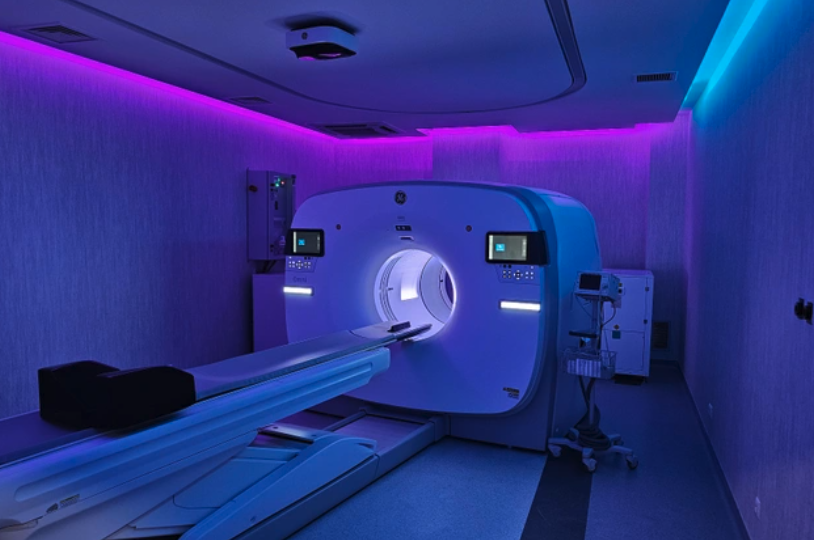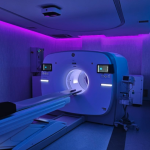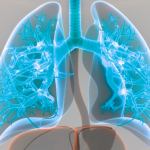Artificial Intelligence in Digital PET/CT: Revolutionizing Cancer Diagnosis
Introduction to AI-Powered PET/CT Omni Legend
What happens when PET/CT, a critical imaging method for diagnosing suspected cancer, is enhanced with artificial intelligence? The PET/CT Omni Legend answers this question with its advanced technology that offers faster scanning, superior image quality, and numerous other benefits.
Artificial intelligence (AI) has become increasingly significant in various fields, and healthcare is no exception. The PET/CT Omni Legend, an AI-enhanced, fully digital system, exemplifies this advancement. It scans the entire body from head to toe in just 7-8 minutes, capturing high-quality images of even the smallest tumors (0.5 mm) while exposing patients to minimal radiation. Assoc. Prof. Dr. Kezban Berberoğlu, Director of the Nuclear Medicine Department at Anadolu Medical Center, highlights the innovations and benefits of this cutting-edge device.
Key Features of PET/CT Omni Legend Technology
Faster Scanning Time
The PET/CT Omni Legend reduces the scanning process from 15 minutes to 7-8 minutes, enhancing patient throughput and comfort.
High-Quality Imaging
This technology can detect very small tumors, as small as 0.5 mm, significantly improving early diagnosis capabilities.
Lower Radiation Exposure
Patients and healthcare professionals benefit from lower radiation doses, making the procedure safer.
Enhanced Patient Comfort
AI-supported software ensures a more comfortable experience, especially important for pediatric patients. The device also features a special lighting system inside the tunnel to reduce anxiety.
Higher Sensitivity in Pediatric Patients
The system’s sensitivity makes it particularly effective for pediatric imaging, ensuring minimal radiation exposure.
Benefits of AI Integration
Shorter Scanning Time, Lower Radiation Dose
The PET/CT Omni Legend cuts scanning time nearly in half compared to older technologies and reduces radiation exposure, allowing for safer and more efficient imaging.
Capturing Very Small Tumors
The ability to image tumors as small as 0.5 mm represents a significant advancement. Current PET/CT scans often miss lesions smaller than 2 mm, making the Omni Legend a vital tool for early cancer detection.
Patient Comforting Lighting
Patients often experience stress during PET/CT scans due to the dark, confined environment. The Omni Legend addresses this with LED ambient lighting and a soothing patterned design inside the tunnel, reducing patient anxiety and movement.
Advanced AI Capabilities
Smart Technology with AI
The PET/CT Omni Legend utilizes machine learning and motion-free features to track patient breathing, ensuring accurate imaging. The system continuously learns and improves its lesion detection capabilities with every scan.
Tracking Patient Breathing
By monitoring lung movement, the device can accurately locate tumors, making it useful not only for lung cancer patients but also for detecting hidden tumors in the sub-diaphragmatic region.
User-Friendly Innovations
Reduction of Imaging Glare
The system includes a Metal Artifact Reduction (MAR) algorithm to eliminate glare in images of patients with metal implants, ensuring clear and evaluable scans.
Efficient Patient Positioning
A camera system reduces the time needed for technicians to position patients from 30 seconds to just 5 seconds, minimizing radiation exposure to the technicians.
Safe for Pediatric Use
Minimizing radiation exposure is particularly crucial for pediatric patients. The PET/CT Omni Legend achieves this goal effectively, making it a safer option for children requiring PET/CT scans.
Conclusion
The PET/CT Omni Legend represents a significant leap forward in medical imaging technology, integrating artificial intelligence to enhance diagnostic accuracy, reduce radiation exposure, and improve patient comfort. Its ability to detect small tumors early, combined with faster scanning times and lower radiation doses, makes it an invaluable tool in the fight against cancer. With continued advancements, AI-powered PET/CT technology will undoubtedly play a crucial role in improving cancer diagnosis and treatment outcomes.




